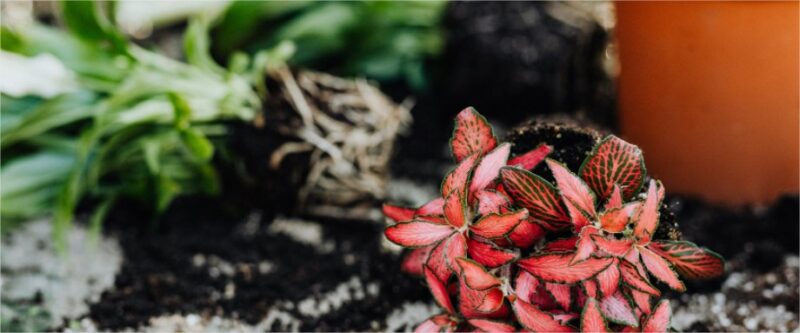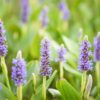Care and Planting of Fittonia are not as easy as it seems. Unless its green ovate leaves are crisscrossed by a network of white veins, this little plant could easily be overlooked. Hence, fittonia is also referred to as nerve plants, mosaic plants, and painted net plants.
The Fittonia, also called the Nerve Plant, Mosaic Plant, or Net Plant, is one of the cutest plants you may see in the wild. When your fittonia isn’t regularly watered, it will wilt like a caffeine fiend on caffeine fast. If you give it something to drink, Fittonia will instantly perk up again. Try capturing this as a time-lapse.
Nerve Plant Types that Grow Well
Named for their red, white, and pink veins running through their leaves, these gorgeous plants originate in Peru. Those plants make striking houseplants, but they can also be found in the wild as ground covers.
According to Rooted NYC Horticulture Lead, Gabby Santiago, nerve plants are among the most unusual and beautiful plants available. Discover how to grow and care for this stunning plant they’ll be a showy addition to your home.
There are many types of fittonia that come in different shades of red and pink. The common variety is green and white. Our favorite ones are:
Mini Red Vein
The fittonia leaves are dark green and have deeply dotted veins that run along the edge.
Titanic
There are crinkled white venation lines on the leaf surfaces of this shorter variety.
Frankie
As opposed to most varieties with green leaves, it has pink leaves with a dark green margin and a lighter pink or white vein network.
Fortissimo
Leaf edges are curled on the large, green leaves. On the midrib and laterally, you can see pinkish-red veins.
Leather Leaf
The leathery ovate leaves have laced patterns of white to greyish-white against their deep green base. There are soft, light green stems on the plants.
Daisy
Distinguished by delicate veins of yellowish-white and large white patterns on the margin, the leaves are muted green.
Red Anne
A heavy covering of pink nerves covers the elongated glossy green leaves.
Purple Vein
The lavender nerves of this fittonia contrast with the dark green leaves, instead of the usual white and pink venations.
Juanita
As Juanita, it looks as though it is a normal dark green plant with a little pink spray paint.
Pink Star
The light pink netting and speckled edges of the blade of this nerve plant are offset by the deep green curled margins.
Fittonias: How to Care and Plant
Temperature and light
Nerve plants require dappled or in direct sunlight because they naturally grow in rainforest floors. If the leaves are exposed to too much sunlight they will burn, so it is vital to recreating the natural environment inside. The ideal window for them is one that faces north or east. Plant fittonias in shady warm areas in the garden.
When exposed to extremes, fittonias experience shock and may decline as a result. Temperatures between 60-80°F (16-26°C) are ideal for them. In winter, you should keep them away from drafts and heaters for their health. An average room temperature is ideal.
The effects of water and humidity
As a moisture-loving plant, fittonias prefer regular watering, but only when the topsoil is dry. The leaves will turn yellow if the soil is too wet, and they will wilt if the soil is too dry. Despite their drought tolerance, Fittonia will thrive when given adequate water.
Nerve plants prefer moist air, and misting every morning can provide this moisture. It is also possible to increase humidity around a potted plant by placing it on a wet pebble tray.
It is also common for plants to collapse suddenly, especially when they are left without care for days at a time. Plants can be killed by prolonged dehydration, so ensure that they are adequately hydrated.
Care and Planting of Fittonia
Nerve plants can be fairly easily grown under the right conditions because care and planting of fittonia is a difficult yet possible job. However, to keep the plant healthy and strong they will need supplements.
Using a complete soluble fertilizer, mixed with water, spray the soil and the leaves with it once a month.
Fittonias should be spaced 6 inches apart when grown outside. To keep pests and diseases away, they should not be planted too deeply, just at the level of the soil. When organic mulch is applied to the soil, it will decompose as it breaks down.
The plants will grow indoors all year round with fluorescent lights, but in the summer, they should be placed outside to get thicker and to maintain their vibrant color. Bushier growth can also be achieved by pinching off blossoms as they develop.
Lack of light can sometimes cause fittonias to grow too leggy.
Fittonia stems can also be propagated from these cuttings since their roots can easily develop. As a result, these overgrowths should be trimmed to strengthen the plant’s shape. The roots can easily form in the soil after the tubers are inserted.
Typical Pests and Diseases
Fittonias often suffer from attacks by mealybugs and aphids. The pest can be manually removed with tweezers or an alcohol-soaked cotton swab after isolating the plant.
Until there are no signs of pests or signs of infestation, this should be done regularly. It is not recommended that strong commercial pesticides be used on this delicate plant.
Propagation of Fittonia
Cuttings of Fittonia stems or leaves can be used to propagate it. Place the stem in water in a bright, warm location by cutting it at the node. Another alternative is to cut out a leaf and dunk it in water as well. A number of weeks are required for this process. This process can be sped up with rooting powder.










